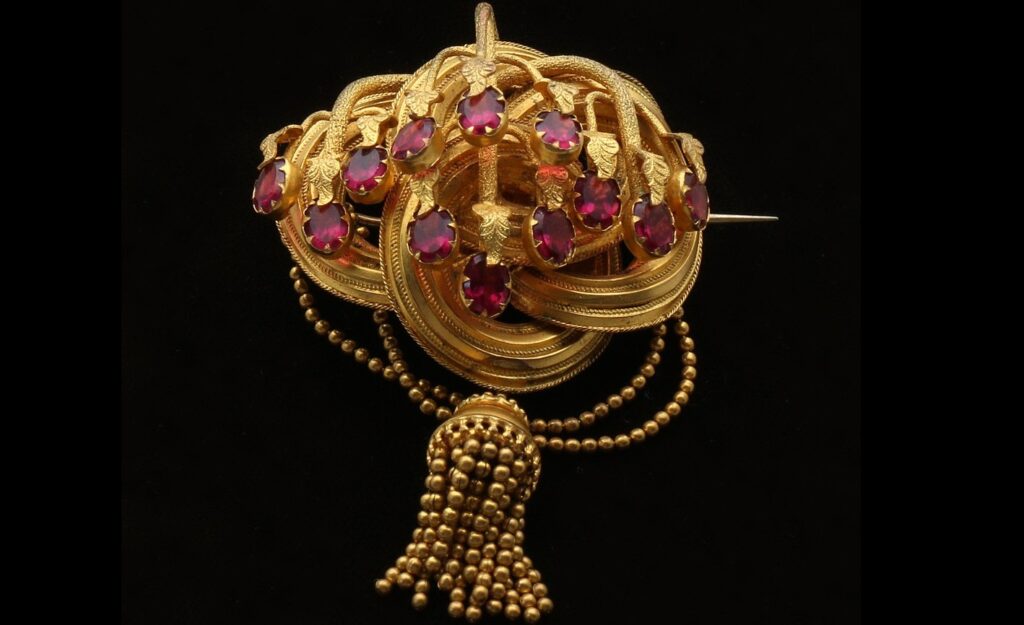
Victorian almandine garnet brooch. Photo by Charles J. Sharp
When most people think of garnet, they think of a shiny red gemstone and, while they wouldn’t exactly be wrong, there’s actually a lot more to the world of garnets than just a single color. Garnets are not a single gemstone, but a whole group of silicate minerals and, while red is the most common type, they can actually be found in almost any color. They mostly follow the same basic chemical composition, but differences in growing conditions and variations of certain elements in their composition can lead to these distinct colorations.
- Almandine – An iron alumina garnet that appears deep red or purple in color.
- Andradite – A nesosilicate garnet that comes in black, green, and yellow-green. The green and yellow-green varieties are extremely rare and highly prized.
- Grossular – A calcium-aluminum gem that can be found in green, yellow, red, and a cinnamon-brown color.
- Pyrope – A nesosilicate that, in its natural state, only ever expresses a red coloration. Pyrope can be hard to distinguish from almandine, but one telltale sign is that it will often have fewer flaws and inclusions than almandine.
- Spessartine – A nesosilicate, manganese aluminium garnet that occurs in orange-yellow or violet-red.
- Uvarovite – A chromium nesosilicate, this is the rarest form of the main garnet species and it only grows in green. It is often said to have a rich, emerald-like hue.
In addition to the six main species, there are also multiple lesser known species, several subspecies, and intermediates such as pyrope–spessartine. Also known as blue or color-change garnet, pyrope–spessartine is even rarer than uvarovite. It was not discovered until the late 1990s (in Bekily, Madagascar) and, depending on the lighting, can appear blue, green, or purple.
Due to the many different colors that garnet comes in, it can be tough to identify whether a stone is a member of the garnet family or something else entirely. One handy trick that helps gemologists separate garnets from the rest of the pack is that it has an extremely rare pick-up response to magnetism – a strong neodymium magnet will allow for proper gem identification when distinguishing garnets from other transparent gemstones.
Garnet is the birthstone of January and state gemstone of New York, grossular garnet is the state gemstone of Vermont, and almandine garnet is the state gemstone of Connecticut. Star garnet (a variety with rutile asterisms that usually forms in a deep brownish-red or reddish-black color) is the state gemstone of Idaho; it has only ever been found in Idaho and India.
In addition to its uses in jewelry and decoration, garnet is also sometimes put to work in industrial applications. It is a high quality abrasive that, in small granulations, is perfectly suited for sandblasting. Garnet paper is commonly used to finish and smooth out wood and, when combined with pressurized water, it can be used to cut through steel and other strong materials. This gem is as practical as it is beautiful!
